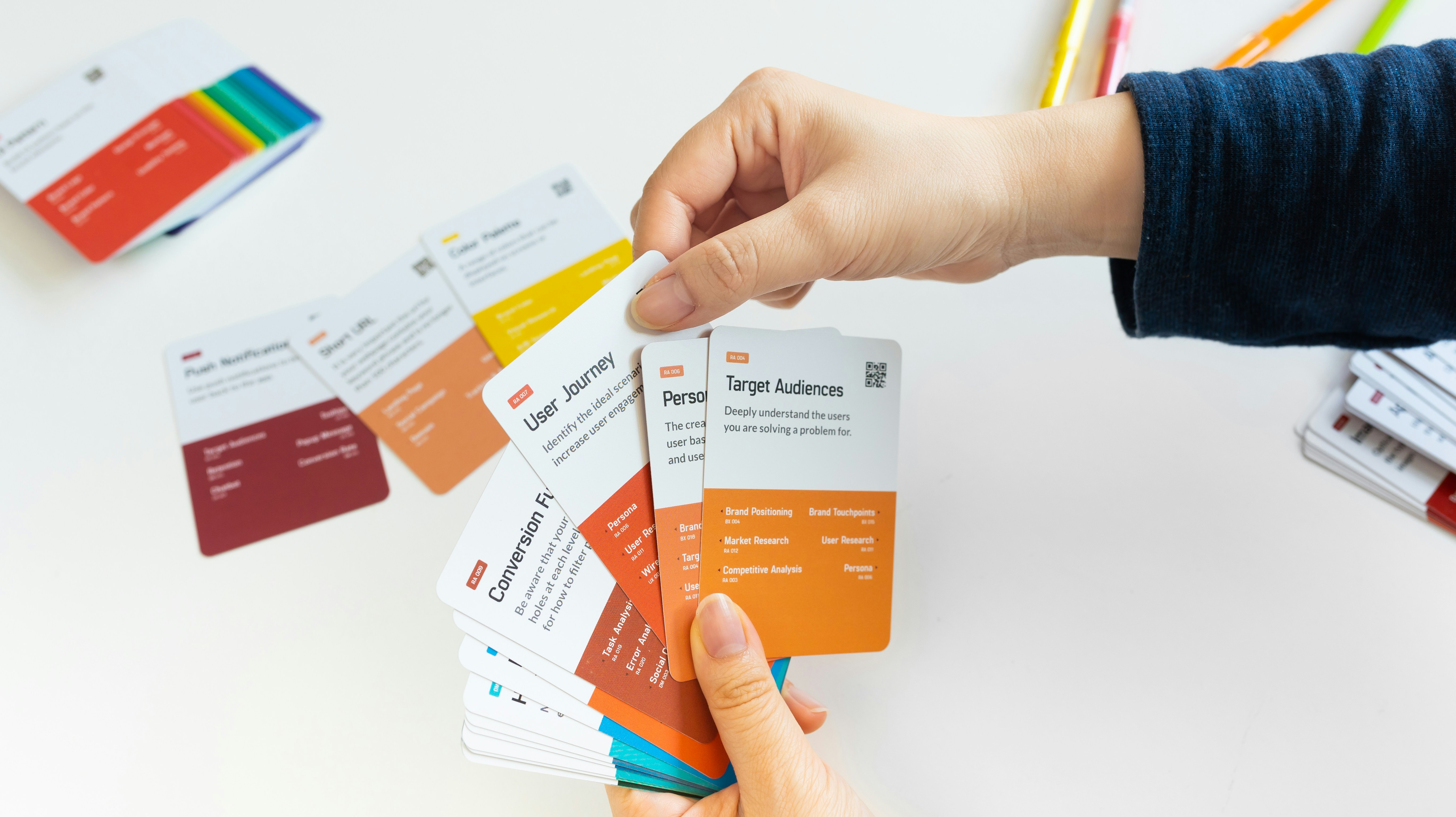Kanban in 2025: The Essential Agile Method to Manage Your Projects with Flexibility, Clarity, and Impact
Discover how the Kanban method and the digital tool LUCKIwi are revolutionizing project management in 2025.
What Is the Kanban Method?
Kanban is a visual management method derived from Lean Management. It helps teams visualize their workflow, limit multitasking, and continuously improve productivity. Popularized by Toyota in the 1950s, it is based on three essential pillars:
- Transparency: everyone can see progress.
- Flow: limit “Work In Progress” to avoid bottlenecks.
- Continuous improvement: data drives decisions.
In 2025, Kanban stands as a reference framework for managing agile projects in a hybrid and digital world.
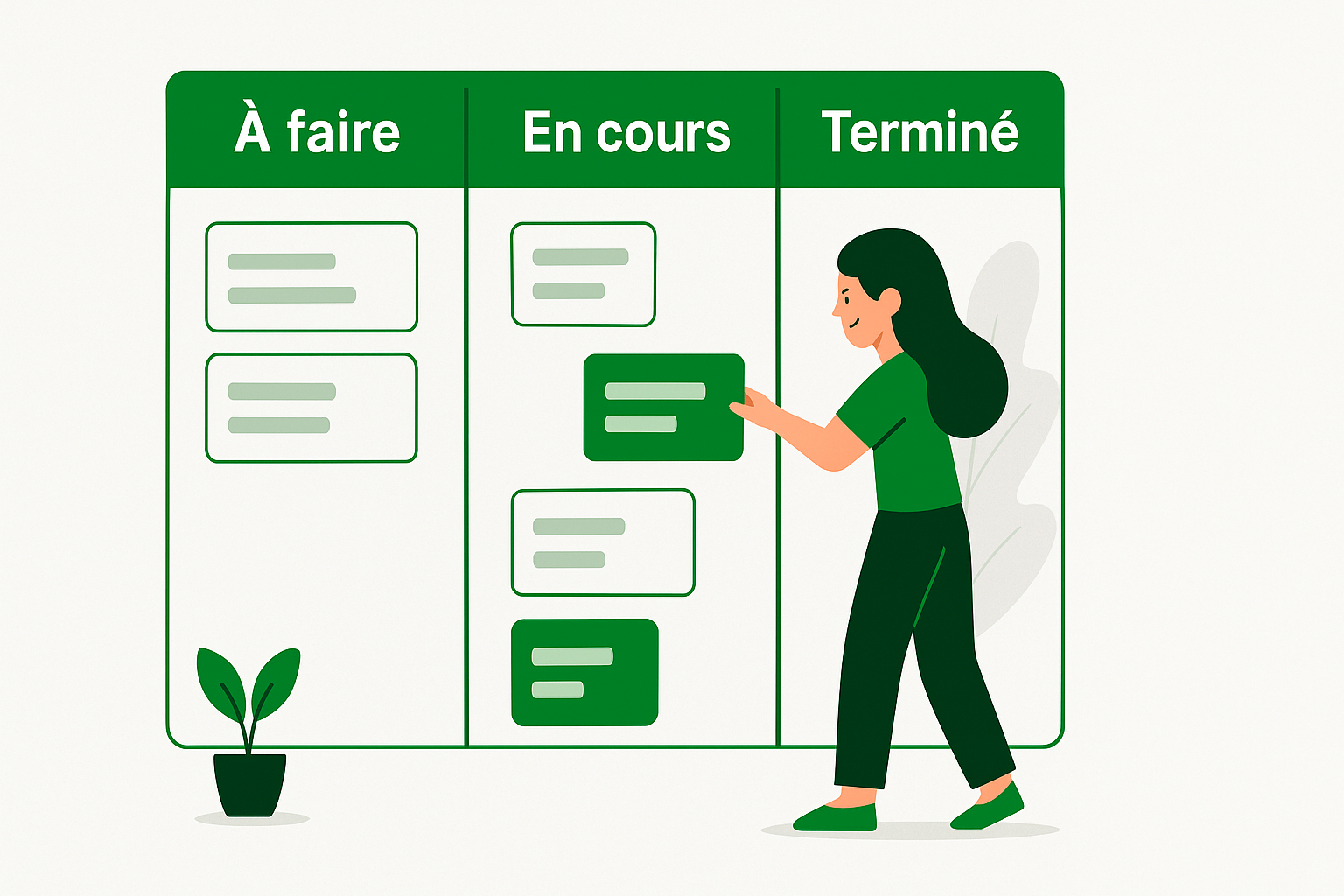
The History of the Kanban Method (Toyota)
The word Kanban means “visual tag” in Japanese. It was invented by Taiichi Ōno at Toyota to regulate production according to demand — a principle of “just-in-time.”
In the spirit of Lean Management, Kanban pursues three objectives:
- Reduce waste,
- Balance workload and capacity,
- Shorten lead times to improve quality.
Today, these principles remain at the heart of modern organizations, and tools like LUCKIwi carry on this legacy through a smooth and collaborative digital experience.
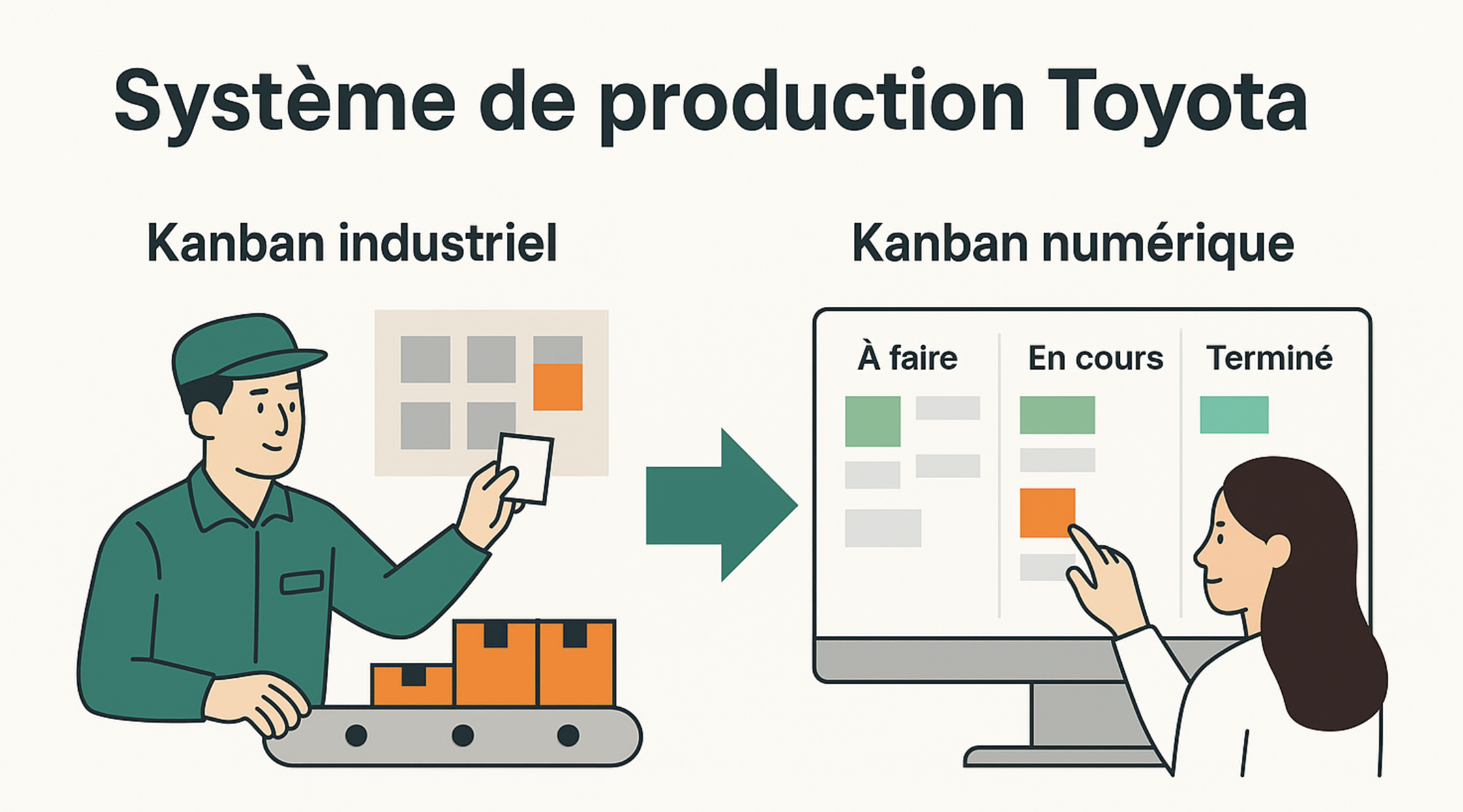
How Does Kanban Work?
The Kanban board visualizes workflow through several columns representing the stages of a project:
- To Do
- In Progress
- Done
- On Hold / Blocked
Each card represents a task, and its movement from one column to another shows work progression. The goal: visualize the flow to better manage workload and identify bottlenecks.
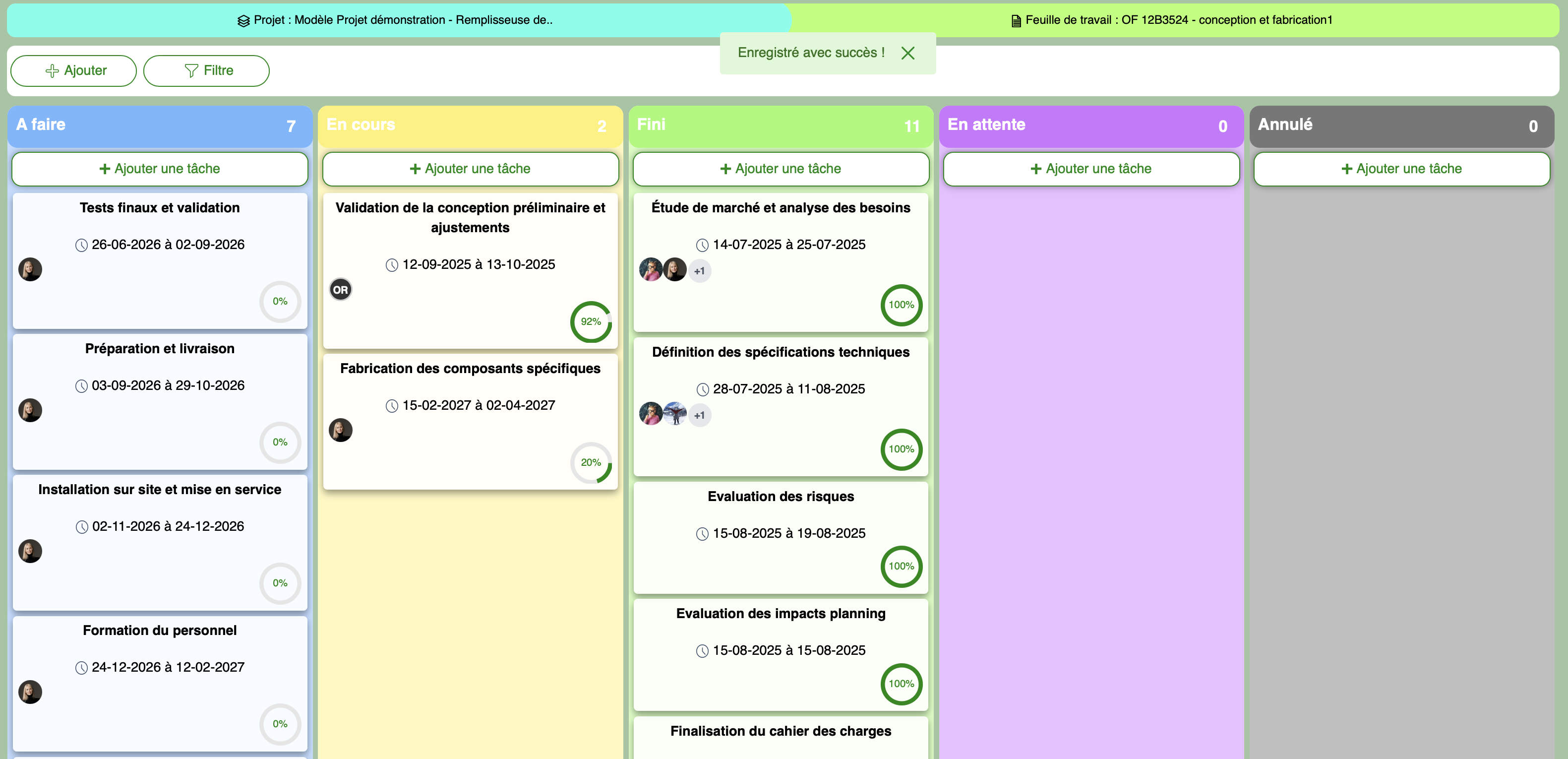
How to Apply Kanban with LUCKIwi?
What makes LUCKIwi stand out is its ability to offer a multidimensional view of your work. You can track tasks by:
- Status (To Do, In Progress, Done, etc.)
- Priority (Urgent, Normal, Low)
- Assignee (by member or team)
- Task type (bug, marketing, communication...)
- Related project or client
- Urgency (imminent deadline, delay...)
LUCKIwi provides a 360° view of your workflow: visualize, analyze, and adjust priorities in a single click. Its customizable filter system and built-in indicators turn project management into a smooth, measurable experience.
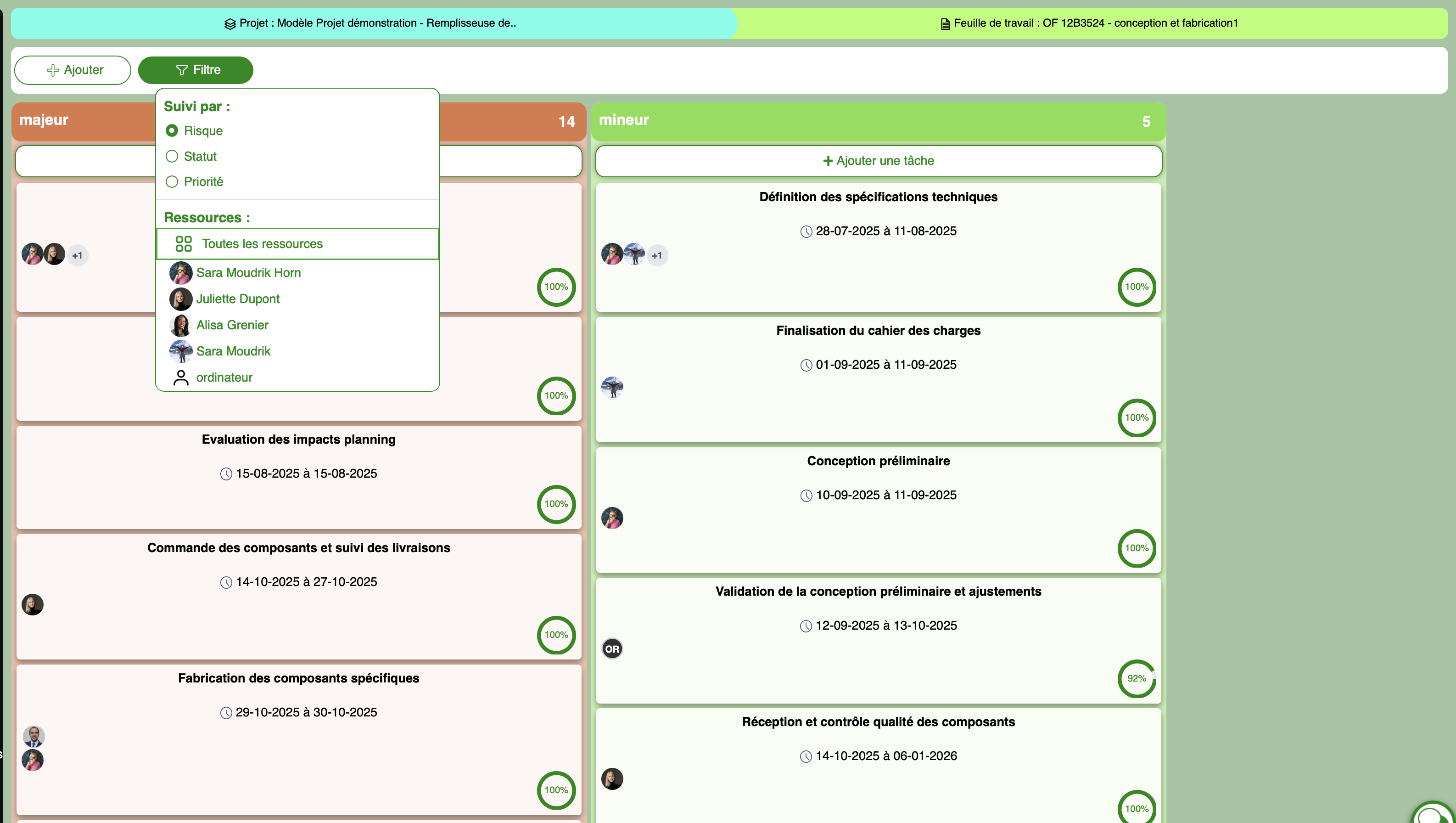
Limiting WIP (Work In Progress)
WIP limits the number of tasks in progress in a given column. It’s a simple but essential rule to reduce multitasking, stabilize throughput, and expose bottlenecks.
Best Practices:
- Start small and adjust based on data.
- Set column-specific limits.
- Review regularly using cycle time and capacity.
Kanban Best Practices & Metrics
For a Kanban system to work effectively, three key metrics matter:
- Cycle Time: average task duration,
- Throughput: number of tasks completed per period,
- WIP: work in progress.
These metrics are connected by Little’s Law: Throughput = WIP / Cycle Time.
Add to that:
- Explicit policies (clearly define “Done”),
- Bottleneck detection via Cumulative Flow Diagram (CFD),
- Balanced task sizing to avoid blockages.
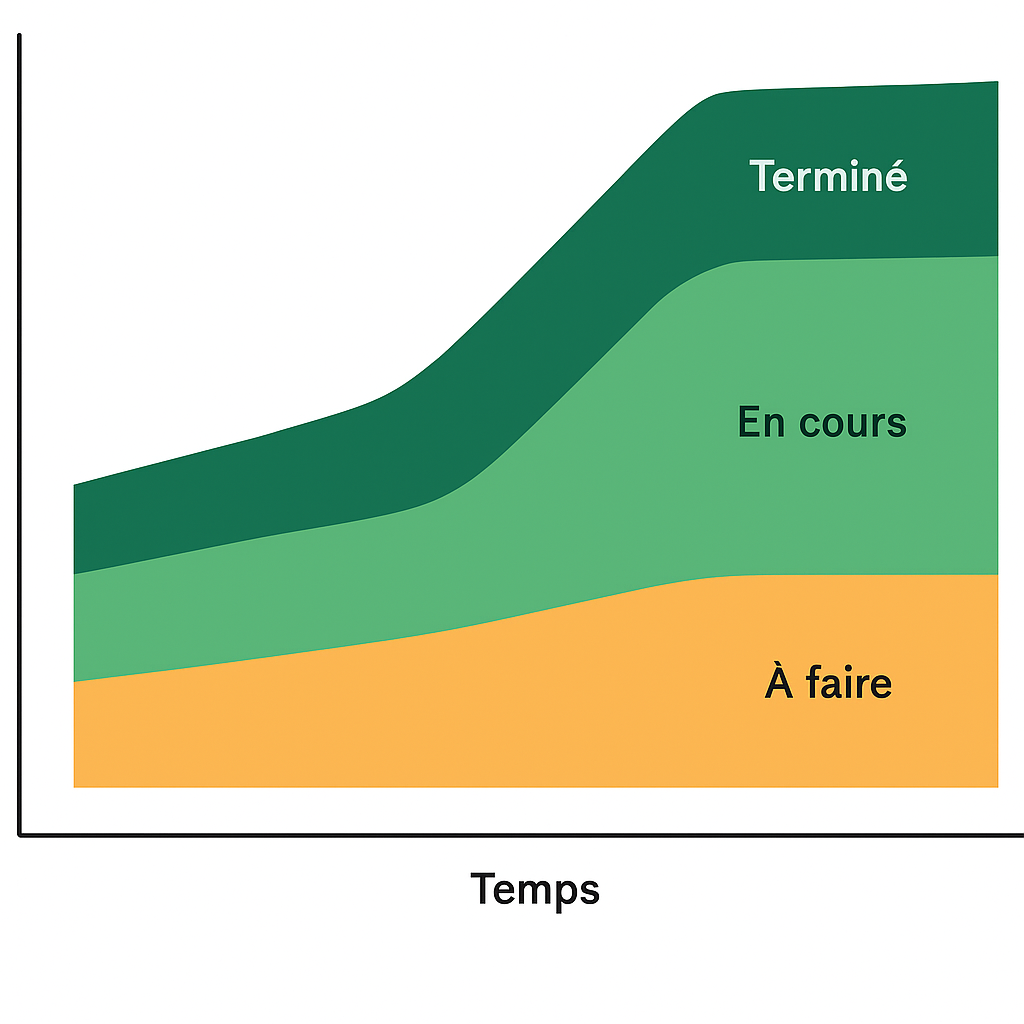
Kanban vs Scrum: What’s the Difference?
| Aspect | Kanban | Scrum |
|---|---|---|
| Cadence | Continuous flow | Fixed sprints |
| Defined roles | No | Yes (PO, SM, Team) |
| Adaptation | Continuous | Per sprint |
| Flexibility | Very high | Structured |
Kanban adapts better to dynamic environments, while Scrum suits teams that prefer structured cycles. Both can coexist depending on the team’s agile maturity.
The 3 Types of Kanban
- Production Kanban (P-Kanban): triggers production at the right time.
- Withdrawal Kanban (W-Kanban): manages replenishment.
- E-Kanban: a digital, automated version used in tools like LUCKIwi.
Why Choose LUCKIwi for Your Kanban in 2025?
- Manage your projects easily, from Kanban to Gantt.
- Visualize tasks by status, priority, assignee, type, urgency, or client.
- Collaborate in real time with synchronized team views.
- Centralize files, discussions, and resources.
- Enjoy unlimited boards and a free 10-day trial.
Kanban Trends in 2025
- Smart Automation: automatic card creation and AI notifications.
- Flow Prediction: cycle time analysis to anticipate delays.
- Collaborative Integration: Slack, Teams, Notion, etc.
- Augmented Visualization: predictive indicators and dynamic dashboards.
Kanban is evolving into a strategic dashboard powered by data and artificial intelligence.
FAQ – Kanban 2025
What Is a Kanban Board?
A visual tool to track project tasks, improve transparency, and enhance collaboration.
What’s the Difference Between Kanban and Scrum?
Scrum works in sprints; Kanban works in a continuous flow with no fixed cycle.
Why Use a Digital Kanban Tool?
To track metrics in real time, centralize data, and facilitate remote collaboration.
How to Limit Work In Progress?
Set column limits to prevent overload and stabilize flow.
Why Choose LUCKIwi?
Because it offers a complete view — by status, priority, assignee, project, task type, and urgency — while remaining simple and intuitive.
Related Articles
- Agile Methods: Complete Guide
- Scrum or Kanban: How to Choose?
- Cumulative Flow Diagram (CFD) Explained Simply
Conclusion
In 2025, Kanban remains the go-to method for agile, visual, and effective project management. With LUCKIwi, complexity becomes clarity, numbers become language, and structure becomes a lever for performance.
🚀 Try LUCKIwi for free and discover how digital Kanban can transform the way you work.



